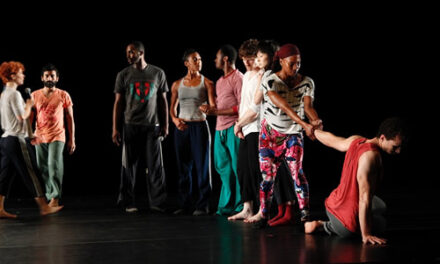A gifted young musician practices diligently, intelligently and assiduously with the intent of becoming a world-class soloist. Sometime in this thrilling trajectory the notion that chamber music is also a desirable and perfectly acceptable career alternative occurs to the budding virtuoso. And perhaps the role of orchestral musician becomes attractive – after all, many great works have been composed for large ensembles.
Eventually, the young musician comes to grips with herself and her potential in face of the reality of the world out there. The lucky few who meet the musical requirements must then face the lottery of the marketplace and its compromises. They will carve out careers, making music and teaching their art to a new generation of would-be virtuosi. These final concerts of the student orchestras at the Eastern Music Festival traditionally showcase half a dozen of these outstanding virtuosi in movements from the concerto repertory. In the first half of the concert Maestro Jose-Luis Novo led the Eastern Symphony Orchestra attentively and with care taken to balance soloists and orchestra.
This concert opened with the splendid but rarely heard Bassoon Concerto, K.191 by the young 18-year-old Mozart, splendidly played by the Hawaiian bassoonist, Christopher Smith. Smith has a strong dark tone that sailed easily over the pared down string sections. Great technique and remarkably nimble tonguing were clear from the start and most obvious in the cadenza.
Maurice Ravel’s Introduction and Allegro, often played as a septet (harp, flute, clarinet and string quartet), makes a delightful addition to the harp concerto repertory with the addition of a few extra strings, much as Claude Debussy’s Danses Sacrée et Profane. Angelica Hairston, 17, from Chamblee, Georgia, was our gifted soloist whose feet were in constant motion as she changed pedal settings frequently in response to the changing accidentals in the music. (The modern harp is tuned in C-flat major and equipped with seven pedals each of which can raise any note a half or whole step. Careful planning by the composer allows diminished chords to be played by sliding the fingers the length of the instrument, but any chord with an interval larger than a minor third cannot be played in a glissando, but must be plucked with a separate finger on each string.) Playing by memory (as did all the young soloists), Miss Hairston “aced” this work, making it look easy.
Jennifer Gersten, 16, from New York City, played the opening of Sergei Prokofiev’s Second Violin Concerto, Op. 63 with a cool slender tone that fit Prokofiev’s sliding modulations perfectly. Fast dramatic passages alternated with slower introspective moments, all of which Miss Gersten handled deftly.
The second half of the concert featured the Guilford Symphony Orchestra (both orchestras are composed exclusively of Eastern Music Festival students) under the direction of Chelsea Tipton in a spectacular pair of orchestral fireworks, George Gershwin’s Cuban Overture and Nicolai Rimski-Korsakov’s Capriccio espagnol. Directed by Maestro Tipton in clear and powerful gestures, the Cuban Overture is the result of a vacation Gershwin had taken in Havana in 1932. Quoting the entertaining program notes of EMF annotator, William Trotter, “It is…one of [Gershwin’s] most complex and sophisticated compositions, exciting and extravagant in its use of a wide variety of Caribbean rhythms and exotic percussion effects.” Great trumpet, percussion and woodwind playing made this performance memorable.
And heaping even more flash and excitement on an already fiery evening, Maestro Tipton led his young charges through an almost perfect performance of the Rimski-Korsakov warhorse. It was brilliant in all sections and the many soloists within the orchestra played brilliantly, especially the principal clarinet and horn. The concertmaster also had delightful solos, some of which were hard to hear because he turned his violin away from the audience. The performance merited the shouting and stamping the audience poured out.












